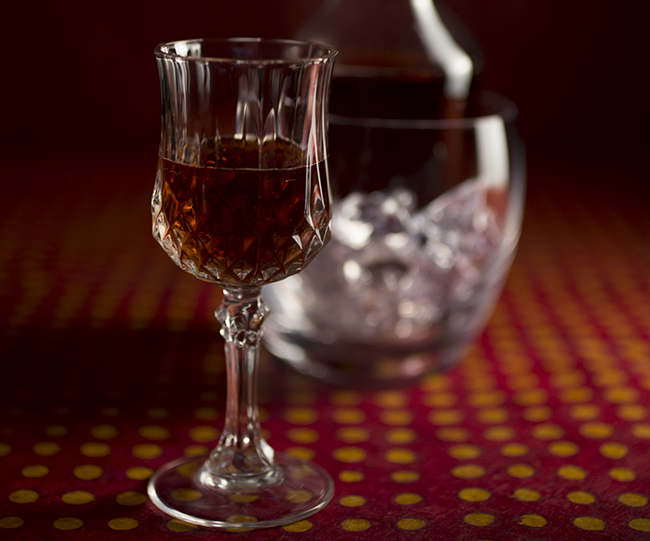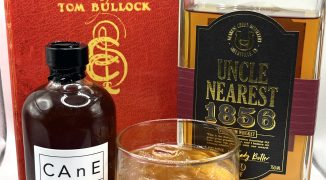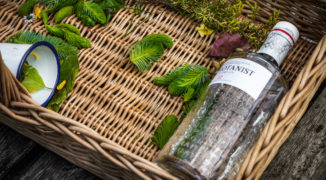Vermouth arrived on the cocktail scene around the time Jerry Thomas was creating the canon’s classics. And now, with the emergence of new domestics and reimagined classic formulas, the once maligned aperitif wine has suddenly become the cocktail’s latest sweetheart.
Adam Ford, author of “Vermouth,” says bartenders need not be overwhelmed by this recent spirits explosion, advocating research to choose a style for cocktails based on freshness and complexity. Is the nose beautiful or pleasant? Does the vermouth contain the citrus or herbal notes you are trying to highlight? Most importantly, would you sip it on its own?
“If I don’t want to drink it straight, I don’t want to add it to my cocktail,” Ford says.
Jerry Thomas merely enhanced vermouths with a splash of liqueur and a few bitters. Maybe a twist of lemon if he was feeling fancy.
Americano in Portland, Oregon has developed a healthy vermouth program highlighting not only the fortified wine’s quaffable qualities but the use of domestic, modern and reformulated traditional vermouths in cocktails.
Bar manager Carlton Dunlap says while most vermouths are meant to be sipped straight, the growth among the modern and domestic styles have made the spirit more accessible for building cocktails.
The bar, which opened in March 2016, still carries one of its original drinks — A Meadow for Eeyore. The classic highball uses Portland-based Imbue Petal & Thorn vermouth.
“Instead of mixing and mashing a vermouth with a bunch of ingredients to create the notes we wanted, Petal & Thorn was chosen specifically because it already contains those notes,” Dunlap says of one of the bar’s most popular drinks.
The cocktail contains the chamomile-forward Petal & Thorn, an Everclear and chamomile tincture, honey syrup and Q Tonic. The tincture bumps up the floral notes in the vermouth, creating a much more complex highball.
Unlike the lifeless, soda gun-topped white wine spritzers of the 1990s, Dunlap wanted to create a refined version in keeping with traditional Italian spritzes which align with Americano’s aperitif and low-proof cocktail program.
After failing to find the right dry white wine for the spritzer, Dunlap discovered Portland’s Cuvée A Amrita which likens itself to a Gewurztraminer or a Riesling. At first, the wine fell flat in the cocktail but once he paired it with Imbue’s Bittersweet Vermouth, the low-proof sophisticate Sauvie Island was born.
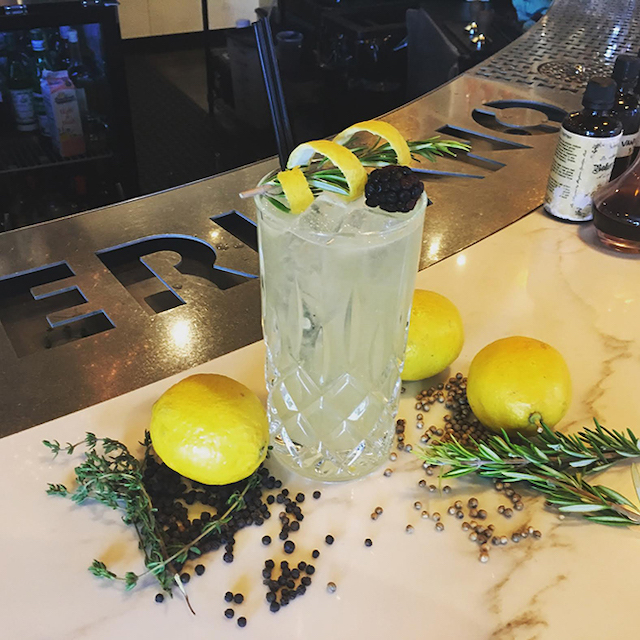 The Sauvie Island pairs Cuvée A Amrita with Imbue’s Bittersweet Vermouth — yielding a low ABV but sophisticated cocktail. Photo courtesy of Americano.
The Sauvie Island pairs Cuvée A Amrita with Imbue’s Bittersweet Vermouth — yielding a low ABV but sophisticated cocktail. Photo courtesy of Americano.
“Imbue Bittersweet mirrors the aromatic profile of the cuvee blend but with the added wormwood it increases the natural bitterness of the wine,” he explains. “We added an herb-lemon cordial with rosemary, thyme and coriander to bump up those notes in the vermouth and topped it with seltzer. This drink is bright, refreshing and lemony.”
Pairing higher proof spirits such as a 100-proof tequila or a barrel-strength bourbon with vermouth can be more challenging. For example, Dunlap finds Rittenhouse Rye and Cocchi Torino together are a no-go, as the rye overwhelms the vermouth. He suggests pairing it with Carpano Antica or Punt e Mes. Both vermouths are equally matched in body and weight to the rye.
Choosing the right vermouth for cocktails is all trial and error, which Ford believes shouldn’t exclude classics like the Manhattan or martini simply because the dry and sweet vermouths used have been time-tested and approved.
“For the classics in my book, I came to those recipes by a long process of trial and error and experimentation just to see which turned out the best among a growing [vermouth] selection. I made suggestions for vermouths I felt created slightly different cocktails driven by the vermouths’ profiles.”
For the Savoy Hotel vermouth and gin classic Hanky Panky, Ford suggests trying Atsby Armadillo Cake, Dolin Rouge or Ransom Sweet in place of traditional styles like Cocchi Torino.
Ford wanted his suggestions to give bartenders the option to play around with vermouth in the cocktails. He hoped to broaden their thinking in terms of the versatility the wine-based spirit is now enjoying from modern producers.
“If you’re just swirling dry vermouth around a glass and dumping it out, the vermouth you select is beside the point. But, assuming you are building a drink that seeks to harmonize all the ingredients, the vermouth, like everything else going into the drink should be properly considered,” Ford explains.
His book includes several cocktail recipes ranging from forgotten classics to modern originals, all of which give vermouth suggestions meant to promote experimentation and showcase the broad spectrum of the category.
For the bourbon-based Shafer’s Eureka, Ford could have used Dolin Dry but felt the vermouth was too light for the cocktail. He suggests Atsby Amberthorn, Uncouth Wildflower or Sutton Cellar Brown Label as options.
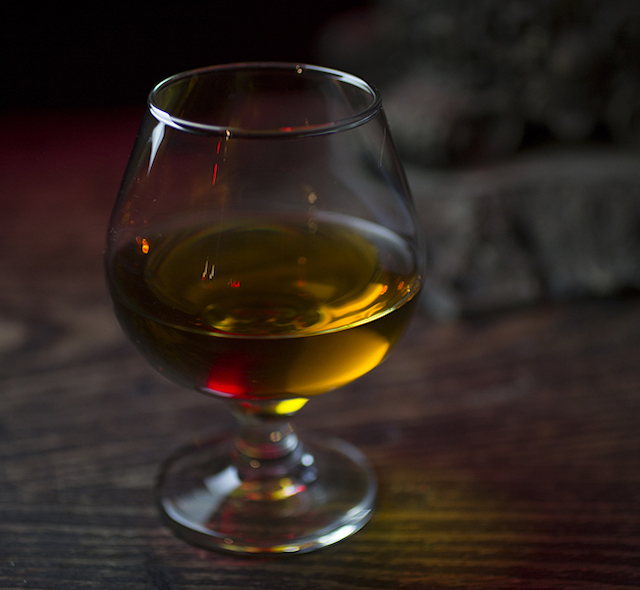 Citrus and floral notes are at the forefront of Shafer’s Eureka. Photo courtesy of Adam Ford.
Citrus and floral notes are at the forefront of Shafer’s Eureka. Photo courtesy of Adam Ford.
“I suggested Sutton Cellar Brown Label because I think the citrus and floral notes just burst out of those bottles and ultimately create a more complex cocktail,” Ford says of the drink, which includes chamomile tea and grapefruit bitters.
Jeff Banks of Brush Sushi Izakaya in Decatur, Georgia began his journey down the vermouth rabbit hole in January 2016 when he discovered the 1890s equal parts sherry and vermouth cocktail, the Bamboo, while researching drinks to feature on the restaurant’s opening menu. His deep dive into the cocktail’s history and its most finicky component would last nearly six months.
“My biggest issues with the Bamboo was blending two low-proof spirits: sherry and dry vermouth. I tried a couple of different sherries. They weren’t working. The cocktail had no body and it seemed disconnected,” Banks says of his first forays into making the classic. “This drink includes Angostura and a lemon twist. The lemon twist is crucial to the cocktail. I tried adding a lemon oleo and a barspoon of simple syrup. That seemed to work better but I wasn’t satisfied.”
Unfortunately, Banks never found the magic formula for the cocktail by the time the restaurant opened in March.
He put it aside.
A visit from Tales of the Cocktail director of education Philip Duff a couple of months later would have Banks renewing his quest for the perfect vermouth for Brush’s Bamboo.
“Philip came to town for a vermouth seminar and talked about the La Quintinye products. After chatting with him about the Bamboo, I decided to go with their blanc because it’s off-dry with great botanicals which play well with fino sherry,” Banks recalls. “I paired the sherry with the blanc but the drink still felt somewhat disconnected. Remembering the lemon twist, I decided to maderize the vermouth with lemon peels. The pith of the peels brought the citrus and lemon notes forward, balancing the palate and bridging the gap between the two spirits.”
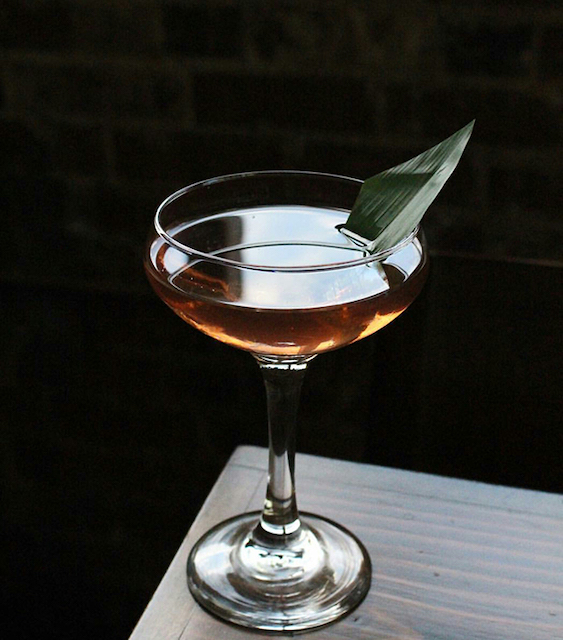 Brush Izakaya’s version of the classic Bamboo. Photo courtesy of Brush Sushi Izakaya.
Brush Izakaya’s version of the classic Bamboo. Photo courtesy of Brush Sushi Izakaya.
To create his Bamboo, Banks places the peels of one whole lemon into the blanc vermouth. Using what he calls a “sakuzzi” (sake warmer), he heats the bottle for one hour. The vermouth is then mixed with Jose Ramon fino sherry, a dash of Angostura, a dash of orange bitters and a barspoon of simple syrup to add weight.
“I really love this cocktail. It’s something I’m very proud of at Brush. Vermouths are so nuanced and each sits differently on the palate. It’s a fantastically broad category and fun to work with in cocktails.”
Empire State South’s Kellie Thorn in Atlanta created a session sipper called “Day Drinker” which also uses La Quintinye Blanc. The vermouth’s rich blend of white wine and Pineau Des Charentes, along with its herbaceous flavor profile, meld particularly well with the Ocho Reposado tequila she uses in the drink. Thorn says of the blanc, “It’s not afraid to put the wormwood into focus and plays well with tequilas which also display similar herbaceous green notes.”
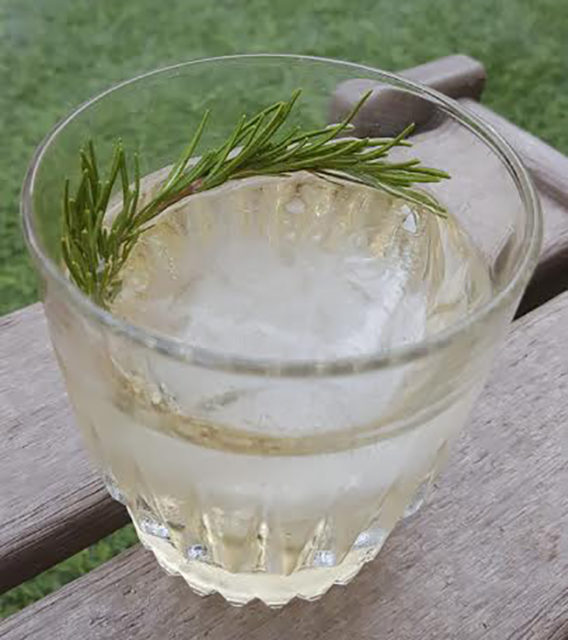 The Day Drinker is bright and herbal, perfect for a mid-afternoon sipper. Photo courtesy of Empire State South.
The Day Drinker is bright and herbal, perfect for a mid-afternoon sipper. Photo courtesy of Empire State South.
Dunlap also suggests checking out Spanish blancs like Yzaguirre, Atxa or Lacuesta; especially for gin-based cocktails.
In addition to carrying Cocchi, Dolin, Carpano Antica and Punt e Mes, Ford and Dunlap advise bartenders invest in a few domestics to use in cocktails such as Brooklyn’s Uncouth Vermouth, Washington’s Hammer and Tongs, California’s Sutton Cellars, and Portland’s Imbue. Imbue just released a classic dry which Dunlap says makes a fantastic martini.
Ford marvels at how far the category he loves has grown, and sees no slowdown in production or the number of new producers.
“One of my goals in writing the book was to broaden the public’s thoughts on vermouth and brands — getting people to seriously consider newer, upstart vermouths that are bringing very different flavors to the party,” says Ford. “We are living in the midst of an amazing time for drinking and eating with people really caring about what they are putting into their bodies. They want to hear the stories of their food and drink. I think one of the best things new vermouth brands are bringing to the table is a sense of story and connection to their producers.”


